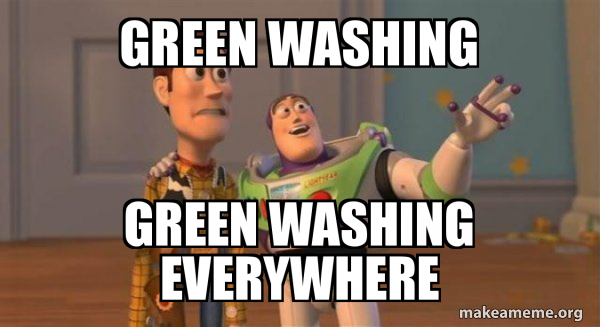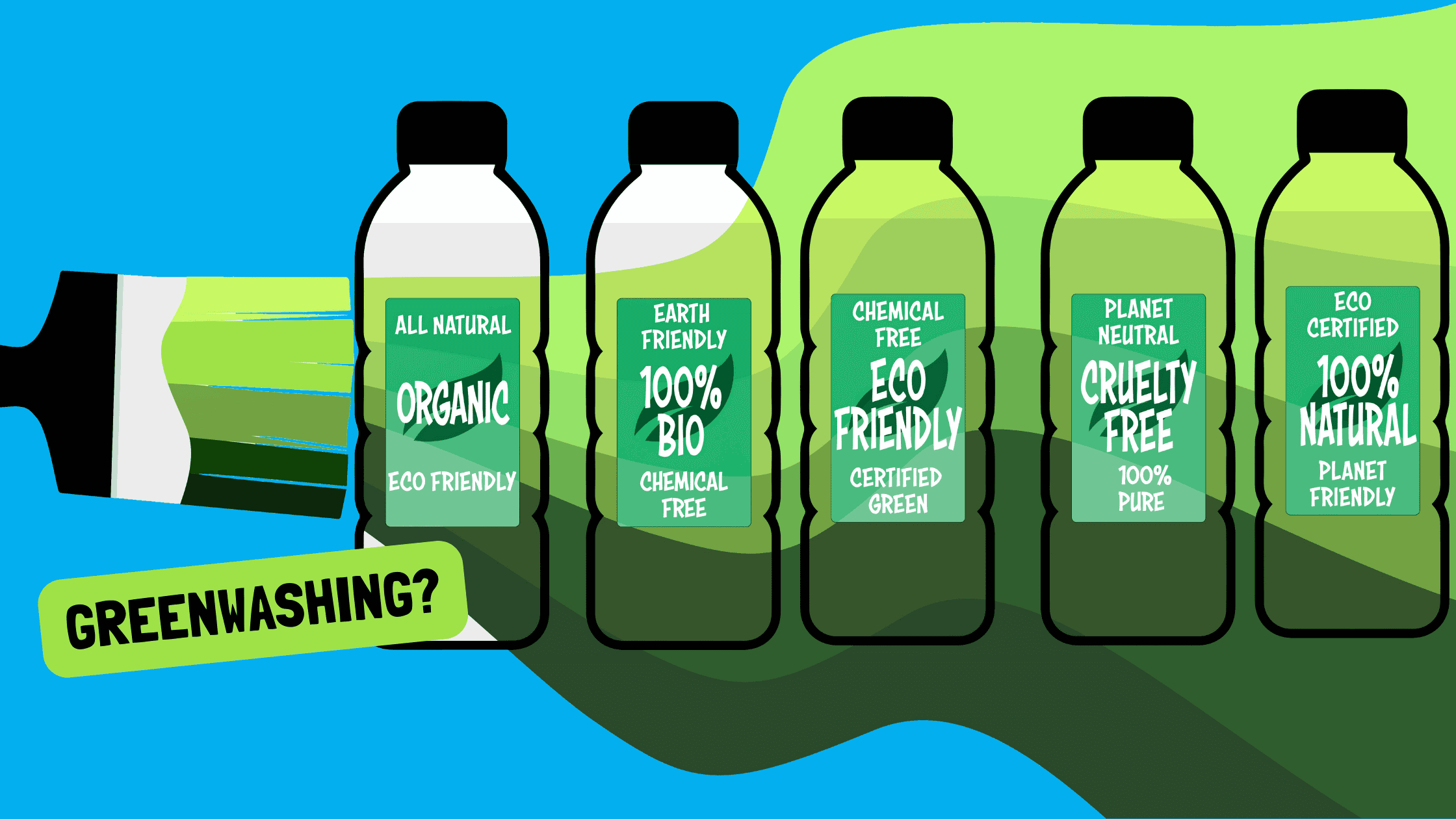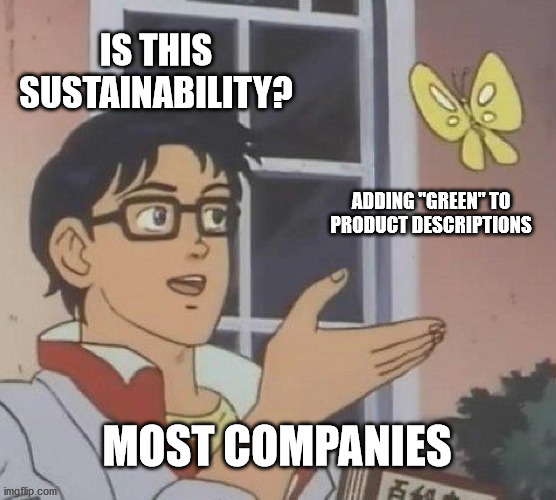Have you ever bought something that said “eco-friendly” or “natural” on the label, only to find out later that it’s faker than a Louis Vuitton bag at Petaling Street? I feel you, sis. It sucks, but the fact is that not all products claiming to be “green” or “eco-friendly” actually are. This is what we call “greenwashing.”
Companies often use fancy words to trick you into thinking their products are good for the environment, when really, they might not be at all. Often though, greenwashing ni sekadar marketing je rather than something that actually helps mother earth. Sneaky kan?
Demystifying Greenwashing buzzwords
A lot of companies that greenwash will throw around popular words associated with the environment. But here’s the tea: those words don’t always mean anything.
Anyone can say their product is green, but it isn’t always the truth. So always be skeptical of the following words when you see them on products UNLESS they are proven or certified to be true (more on that later!)
- “Green” and “Eco-Friendly”
These words are so overused that they’ve lost their meaning! Just because a product has a green label or uses recycled packaging doesn’t mean it’s actually good for the environment. Always check the ingredients and manufacturing process before assuming it’s eco-friendly.
- “Environmentally Friendly” and “Natural”
These words can be misleading because there’s no legal definition for them. A product can claim to be environmentally friendly just because it’s made from natural ingredients, but tapi tak semestinya it’s sustainable or doesn’t harm the environment in other ways.
- “Sustainable”
This is a buzzword that’s thrown around a lot these days, but it’s important to know that there’s no one-size-fits-all definition for sustainability. A product may be sustainable in one aspect, but not in another. Contohnya, a shirt made from organic cotton may be sustainable in terms of the materials used, but if it was shipped halfway across the world to get to you, it’s not sustainable in terms of transportation emissions. So kiranya memang tak sustainable sepenuhnya lah.
How to shop smarter for Mother Earth
Now, let’s get down to business.

Walaupun greenwashing berlambak, there are ways to avoid kena tipu into buying something that benefits companies more than the environment. Here are some tips and tricks to help you shop like a consumer that mother earth will be proud of.
1. Don’t just trust the packaging:
Seperti yang dah dinyatakan, just because a product claims to be “natural” doesn’t mean it actually is. So kena periksa betul-betul apa yang ada dalam product tu. Also, keep in mind that just because the bottle is green, doesn’t mean it’s green if you know what I mean.
2. Look for third-party certifications:
There are several organizations that certify products as sustainable. For example, if a product claims to be “organic,” make sure it’s legit certified by recognized organizations like the USDA Organic label. Cari logo diorang on the product to ensure you’re making a truly eco-conscious choice.
3. Do your own research:
Don’t just take the company’s word for it. If a company truly cares about the environment, they’ll likely have a sustainability report or some other information on their website about their environmental initiatives. Kalau tak jumpa apa-apa, that’s a red flag fam.

4. Support local and small businesses:
Products that are made locally have a smaller carbon footprint in general because they don’t have to be shipped as far. Plus, supporting small businesses helps the local economy, so best to always #sapotlokal kalau boleh.
5. Reduce, reuse, recycle:
The most sustainable product is the one you don’t have to buy in the first place (gitewww). Before making a purchase, ask yourself if you really need it. If you do, see if you can buy it preloved or borrow it from a friend. And remember to choose products with minimal packaging, and always recycle!
READ >> Kids for climate action. We must act to save Mother Earth!
The power is in our hands
So, there you have it, folks! A crash course in greenwashing and how to avoid falling for it. By following these tips, you can be a responsible consumer and help fight against greenwashing.
I know it’s a little more work, but that’s key to being an eco-conscious consumer. And for a bit of effort, memang berbaloi since we’ll be doing our part to take care of this planet we call home. And if a company tries to pull a fast one on you with their greenwashing tactics, just give them an eye roll and move on to a more responsible option.
Or, better yet, speak up! You can spread the news to your family and kawan2 so they can be better informed and support ethical and truly sustainable businesses instead. Write a review or an email to let brands know that you expect better. After all, companies and brands are always trying to connect with Gen Zs so let’s use that to our advantage and put the pressure on brands to walk the talk!
Remember, as a consumer, the power is in our hands!





